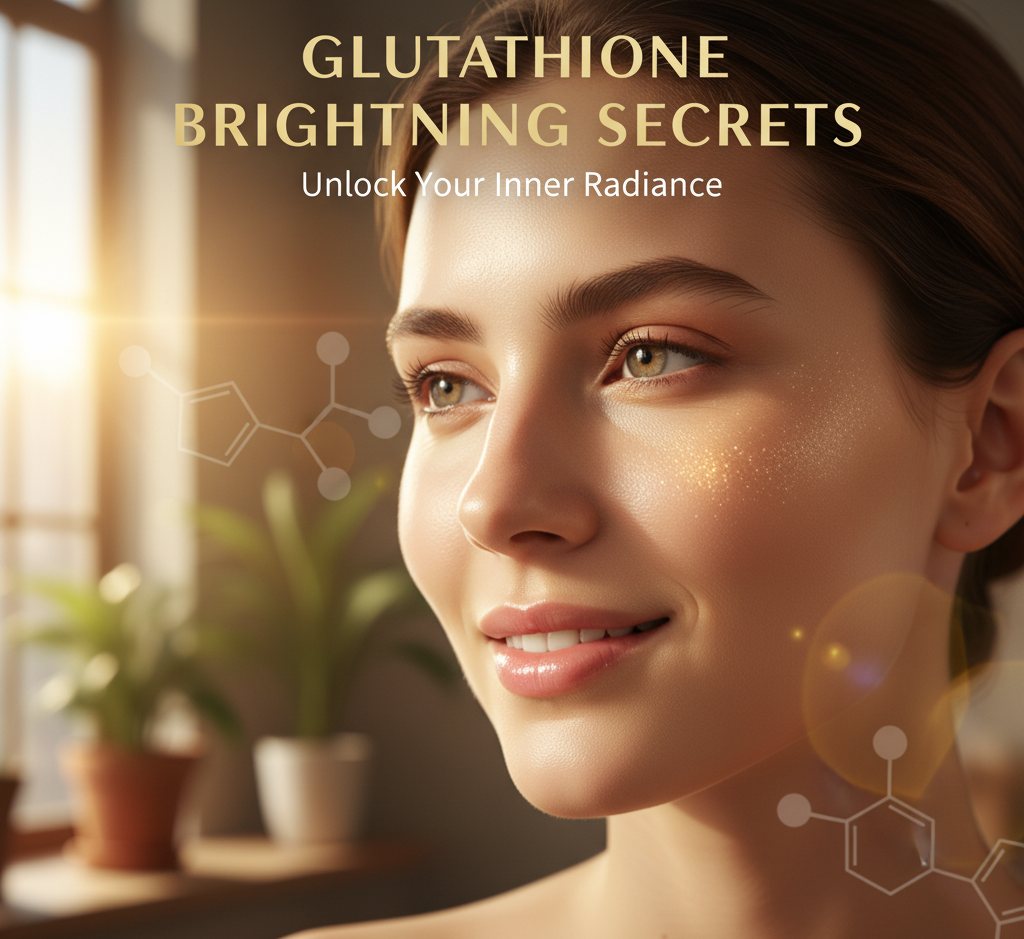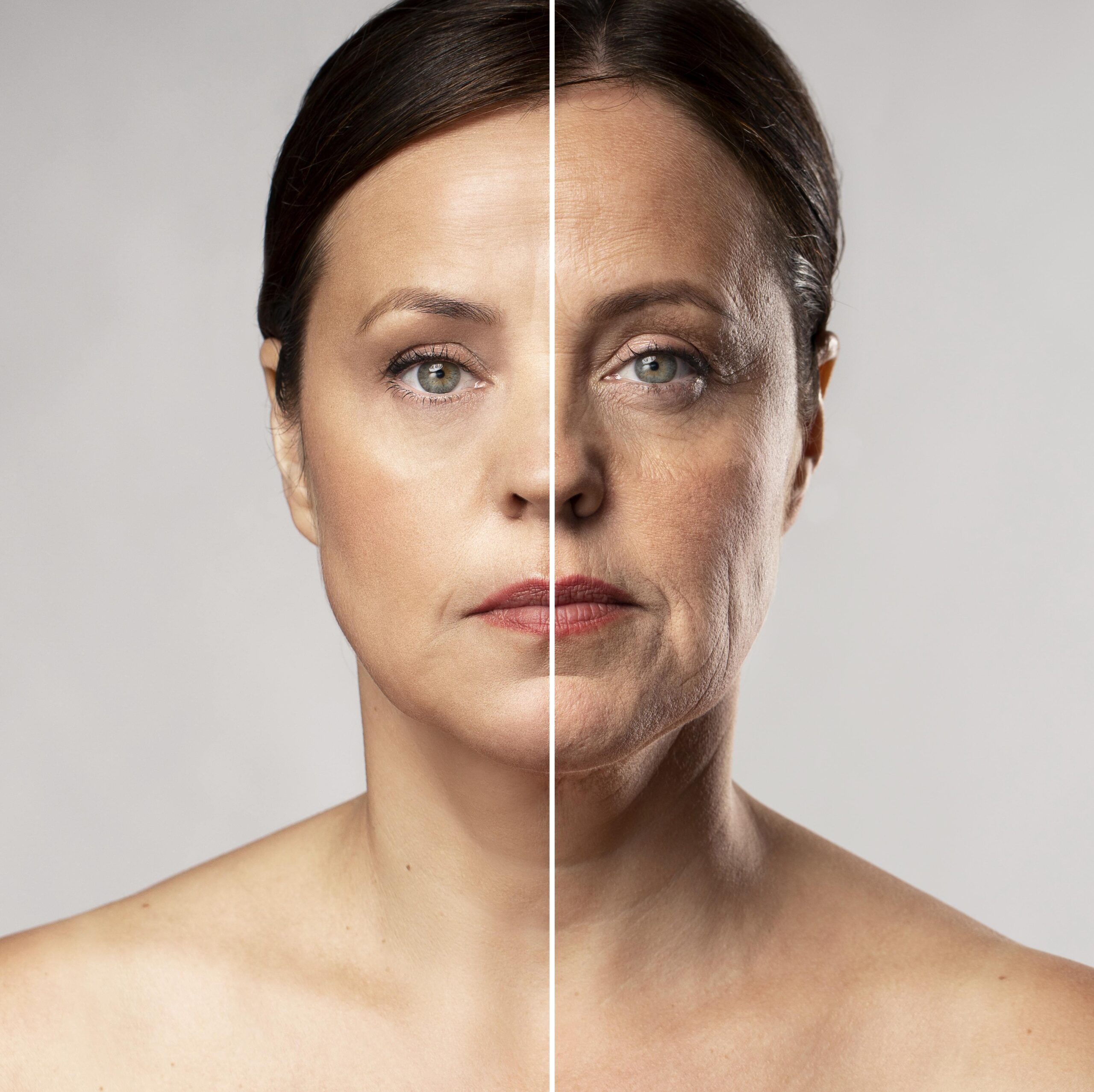Consumers today want products that deliver measurable improvement without damaging the skin barrier. Glutathione sits at the intersection of beauty and biology — it’s not a fad pigment‑bleacher, but an antioxidant with a biochemical role in how melanin is produced. That dual function (brightening + antioxidant protection) makes it attractive for people who want brighter, …
Consumers today want products that deliver measurable improvement without damaging the skin barrier. Glutathione sits at the intersection of beauty and biology — it’s not a fad pigment‑bleacher, but an antioxidant with a biochemical role in how melanin is produced. That dual function (brightening + antioxidant protection) makes it attractive for people who want brighter, healthier skin rather than harsh, temporary lightening.
This post dives deeper than marketing blurbs: it explains mechanisms, reviews clinical evidence, explores safety, and gives you an evidence‑based, user‑friendly routine built around Cosderma’s serum.
The science behind glutathione — explained simply
-
What it is: Glutathione (GSH) is a small tripeptide made of three amino acids (glutamate, cysteine, glycine). Inside cells it exists in reduced (GSH) and oxidized (GSSG) forms and is key to cellular antioxidant defense.
-
How it affects pigmentation: Melanin synthesis (melanogenesis) is controlled by enzymes like tyrosinase. Glutathione modulates this pathway in multiple ways: it can shift melanin production toward the lighter pheomelanin, it interacts with intermediate molecules in the melanin pathway, and it helps maintain redox balance that affects enzyme activity inside melanosomes.
-
Why topical matters: Oral or injectable glutathione reaches the skin differently; topical delivery aims to raise local skin levels with fewer systemic risks. Effective topical formulas use delivery science—penetration enhancers, stable glutathione derivatives, and supportive actives—to transport GSH into the layers where melanogenesis occurs.
Clinical evidence: What studies say about topical glutathione
Scientific and clinical research on glutathione and skin lightening includes oral, topical, and injectable routes. While injectable forms have safety concerns and are not recommended without medical supervision, topical formulations have shown promise in clinical trials and cosmetic studies when properly formulated. Results vary by concentration, formulation stability, and whether the product pairs glutathione with other actives.
What to tell customers:
-
Some randomized controlled trials and clinical studies report visible lightening and reduced pigmentation with topical glutathione preparations when used consistently over weeks. Results are typically reported after 6–12 weeks.
-
Combination approaches (topical + oral, or glutathione + other depigmenting agents) sometimes show faster or greater improvement than glutathione alone.
-
Topical glutathione is generally well tolerated; mild irritation or transient redness is the most commonly reported issue.
How Cosderma’s Glutathione Brightening Serum works — the formulation story
Cosderma’s serum is designed with three formulation goals in mind:
1. Stability & potency: Glutathione is oxidation‑sensitive. Cosderma uses stabilized glutathione derivatives and antioxidant co‑ingredients so that the active remains effective inside the bottle and on the skin.
2. Delivery where it matters: The serum includes skin‑friendly penetration enhancers and small‑molecule carriers that help glutathione reach the epidermal layers and melanosomes where it can influence melanin synthesis.
3. Barrier care & hydration: Brightening should not come at the cost of dryness. The serum pairs glutathione with humectants (like glycerin or hyaluronic acid), skin‑repair lipids, and soothing botanicals to minimize irritation and optimize tolerance.
Curated supporting actives may include (but are not limited to): niacinamide (for barrier function and brightening synergy), alpha‑arbutin (additional tyrosinase modulation), and stable antioxidants (vitamin E derivatives) to protect both skin and glutathione from oxidative breakdown.
Benefits you can expect (realistic timeline)
-
Immediate (first application): Lightweight hydration, slightly smoother texture, subtle radiance from improved light reflection.
-
2–4 weeks: Reduction in surface dullness, improved hydration, some fading of very recent post‑inflammatory hyperpigmentation (PIH) for some individuals.
-
6–12 weeks: Noticeable evening of skin tone, lightening of stubborn dark spots for many users, improved skin clarity and reduced appearance of pigmentation when used consistently.
Safety, side effects, and what to avoid
Topical safety: Most topical glutathione products show a favorable safety profile. Mild irritation, tingling, or temporary redness may occur in a minority of users. Patch testing is recommended for those with highly reactive skin.
What to avoid:
-
Unregulated injections or DIY intravenous use for cosmetic lightening — these routes have documented adverse events and are not recommended for cosmetic use without medical oversight.
-
Combining multiple aggressive lightening agents (e.g., high‑strength hydroquinone + frequent chemical peels + glutathione) without supervision, which may increase irritation and post‑treatment sensitivity.
Sun protection is mandatory. Because brightening treatments affect melanin balance and may reveal underlying sun damage, daily high‑SPF sunscreen is essential to protect gains and prevent rebound hyperpigmentation.
How to use the serum for maximum, long‑lasting results
-
Cleanse with a gentle, non‑stripping cleanser.
-
Tone if desired with a hydrating, alcohol‑free toner.
-
Apply serum: 3–4 drops of Cosderma’s Glutathione Brightening Serum across the face and areas of concern. Gently pat until absorbed.
-
Wait 30–60 seconds, then apply moisturizer.
-
AM routine: finish with broad‑spectrum sunscreen SPF 30+ (SPF 50 recommended for pigmentation‑prone skin).
-
PM routine: serum → moisturizer; optional addition of retinoid on alternate nights if tolerated (see Pairing guidance below).
Consistency tip: For best results, use twice daily and track progress with photos every 2–4 weeks under consistent lighting.
Ingredients to pair with — and those to avoid
Good pairings (synergy without excess irritation):
-
Niacinamide — supports barrier and reduces pigment transfer.
-
Alpha‑arbutin — complementary tyrosinase pathway modulation.
-
Gentle AHAs (low concentration) used sparingly to speed superficial turnover.
-
Antioxidants like vitamin E to protect the active and skin.
Be careful pairing with:
-
Strong in‑office procedures (laser resurfacing, deep chemical peels) without downtime planning.
-
Multiple high‑strength actives at once (e.g., combining high‑concentration hydroquinone, aggressive retinoids, and professional peels) without supervision.
Before‑and‑after care: lifestyle tips that amplify results
-
Sunscreen, sunscreen, sunscreen. Reapply every 2–3 hours when outdoors.
-
Avoid excess heat and sun exposure during early weeks of treatment.
-
Don’t pick or pick at spots — allow hyperpigmented areas to fade naturally.
-
Healthy lifestyle: sleep, hydration, and a diet rich in antioxidants support skin repair and may improve results.
Faq
Q: How long does a glutathione serum take to work? A: Expect initial improvements in texture and radiance within 2–4 weeks; noticeable pigment reduction typically appears between 6–12 weeks with consistent use.
Q: Is topical glutathione safe for all skin types? A: Generally yes, but those with sensitive or reactive skin should patch test and start with once‑daily use to assess tolerance.
Q: Can I use glutathione with retinol? A: Yes — but introduce retinol slowly. Start with alternate nights and monitor for irritation. If irritation develops, reduce frequency.
Q: Will glutathione bleach my skin unnaturally? A: No. Topical glutathione modulates melanin pathways gradually and is not the same as harsh, rapid bleaching agents. The result is typically a more even, brighter complexion rather than ‘‘unnatural’’ whitening.
Q: Can pregnant or breastfeeding women use this serum? A: Always consult a healthcare provider. While topical glutathione has a more favourable safety profile than systemic routes, medical advice is recommended during pregnancy and breastfeeding.






